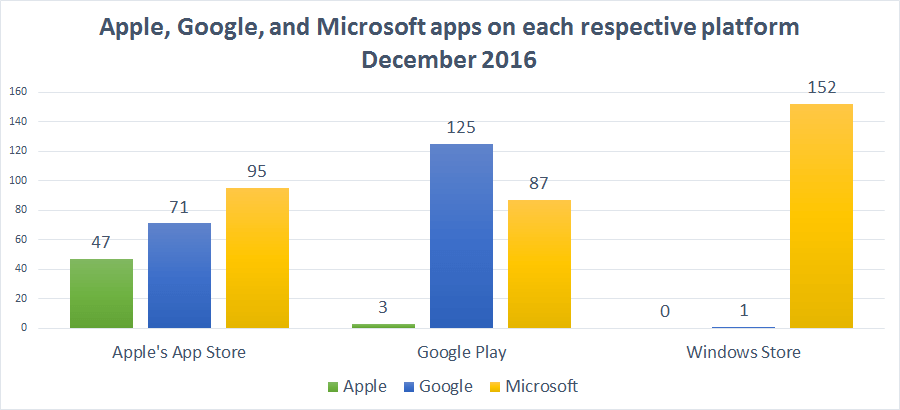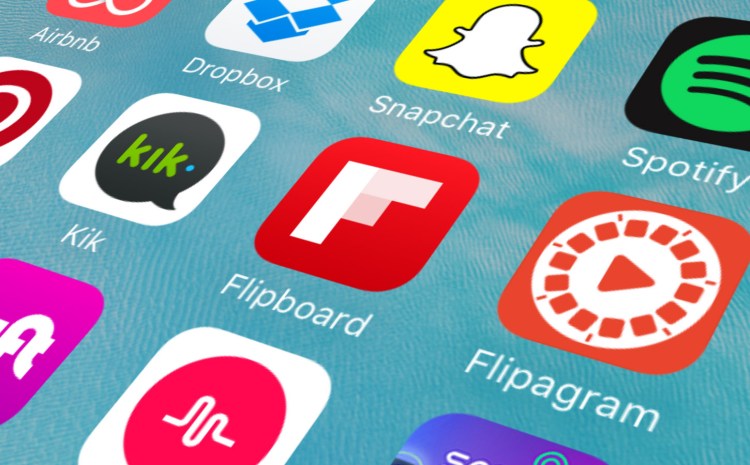For the last two years, we have examined how Apple, Google, and Microsoft develop apps for each others’ competing platforms. It’s time to take another look at their strategies, which of course align with their respective business models.
Apple last year released its first three Android apps for Google Play: Move to iOS, Beats Pill+, and Apple Music. This number didn’t change in 2016, and neither did the fact that Apple continues to ignore the Windows Store. On its own platform, the company more than doubled its apps over the last year.
Google brings almost all its major apps from Android to iOS, offering solid experiences on both platforms. The company also shuns the Windows Store, except for one app: Google Search. On its own platform, the company increased its own apps by some 20 percent in 2016.
Microsoft continues to develop apps for all three platforms, naturally preferring its own. Like in 2014 and 2015, Microsoft this year offered more iOS apps than Google does. And once again, both Microsoft and Google still offer more iOS apps than Apple does in its own store.
Here’s a snapshot of how many apps the three companies had available in each store at the end of 2016:

To compile this chart, we tallied up the number of apps published by these companies in each of the three app stores. That means we’re counting apps listed in the stores, not those that come preloaded on devices (and we’re counting just one app for iOS, instead of one for iPhone and one for iPad, just like on Android and Windows). Remember that not all apps are available in every market, so you may see fewer apps, depending on which regional store you are accessing. Also keep in mind that all three of these companies build software that doesn’t reside in app stores, and they acquire apps published by different firms — neither is being counted here.
Microsoft has so many entries in its own Windows Store because we’re also counting those published by “Microsoft Studios.” Google’s numbers are inflated a bit as well by the inclusion of very similar apps (such as Chrome and Chrome beta), since we’re counting individual entries in the store.
All in all, not much has changed in the past few years. Thanks to the failure of Windows 10 Mobile, neither Apple nor Google had to even consider giving Microsoft’s platform another look.
And so the Android-iOS duopoly continues. Right now, it doesn’t look like 2017 will be much different.
VentureBeat's mission is to be a digital town square for technical decision-makers to gain knowledge about transformative enterprise technology and transact. Learn More

